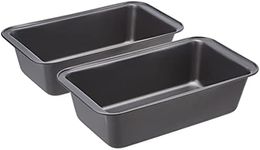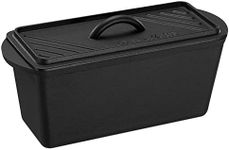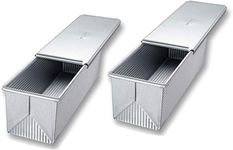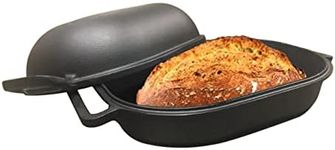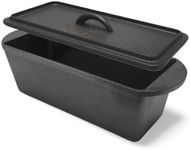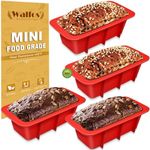Buying Guide for the Best Loaf Pans
Choosing the right loaf pan can make a big difference in your baking results, whether you're making bread, cakes, or meatloaf. The right pan will help your baked goods cook evenly, release easily, and look great. When picking a loaf pan, it's important to think about what you'll be baking most often, how much you want to make at once, and how easy you want cleanup to be. Understanding the key features of loaf pans will help you find one that fits your needs and makes baking more enjoyable.MaterialThe material of a loaf pan affects how your baked goods cook and how easy the pan is to clean. Common materials include metal (like aluminum or steel), glass, ceramic, and silicone. Metal pans heat up quickly and give a nice brown crust, but can sometimes stick if not greased well. Glass and ceramic pans heat more slowly and evenly, which can be good for gentle baking, but they can be heavier and breakable. Silicone pans are nonstick and flexible, making it easy to remove your loaf, but they may not brown as well. If you like a crisp crust, metal is a good choice. If you want easy release and less cleanup, silicone might be better. Think about what you bake most and how you like your results to guide your choice.
SizeLoaf pans come in different sizes, usually measured by length (like 8-inch or 9-inch) or by volume (like 1-pound or 1.5-pound). The size you choose affects how much batter you can use and how your loaf will rise and bake. Smaller pans are good for mini loaves or small batches, while larger pans are better for big families or sharing. If you use a recipe, check what size pan it calls for, as using a pan that's too big or too small can change the baking time and texture. Pick a size that matches your usual recipes and how much you want to bake at once.
Nonstick CoatingA nonstick coating helps your baked goods come out of the pan easily and makes cleaning up simpler. Some pans have a nonstick layer, while others do not. Nonstick pans are great if you want to avoid sticking and spend less time scrubbing, but the coating can wear off over time if you use metal utensils or wash them in the dishwasher. If you prefer a pan that lasts longer, you might choose one without a coating and use parchment paper or grease instead. Think about how much you value easy release and cleaning versus long-term durability.
Shape and DesignMost loaf pans are rectangular, but the exact shape can vary—some have straight sides, while others are slightly tapered. The shape affects how your loaf looks and how evenly it bakes. Straight-sided pans give a more uniform loaf, which is good for sandwich bread, while tapered pans can make it easier to remove the loaf. Some pans also have textured surfaces to help with release. Consider what kind of look you want for your baked goods and how easy you want it to be to get them out of the pan.
Ease of CleaningHow easy a loaf pan is to clean depends on its material, coating, and whether it's dishwasher safe. Nonstick and silicone pans are usually the easiest to clean, while metal and glass may need more scrubbing if food sticks. Some pans are labeled as dishwasher safe, but hand washing can help them last longer. If you bake often and want to save time, look for a pan that's easy to clean and doesn't have lots of corners or seams where batter can get stuck.
